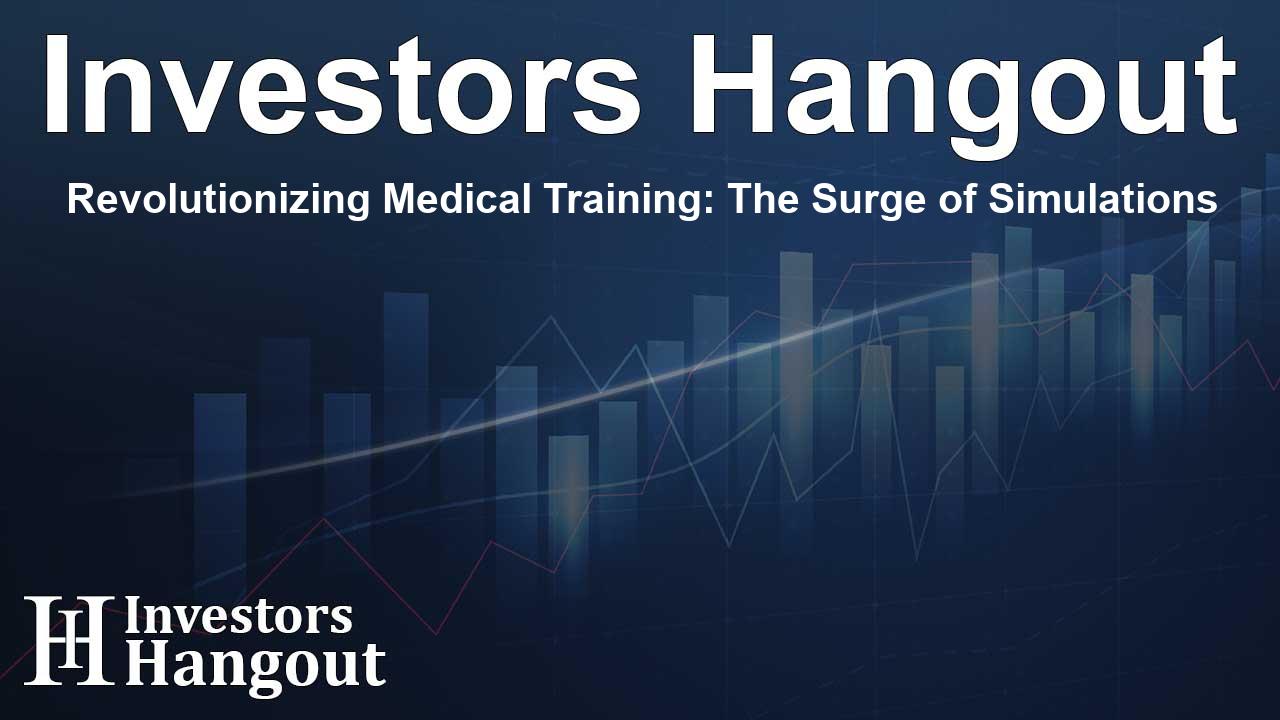Revolutionizing Medical Training: The Surge of Simulations

The Rapid Growth of Medical Simulation Market
The medical simulation market is experiencing remarkable growth, with a valuation of around US$ 2.6 billion in recent years. It is projected to surge to approximately US$ 13.1 billion, fueled by advancements in virtual training methodologies and patient safety innovations. This impressive growth translates to a compound annual growth rate (CAGR) of 16.4%, showcasing an exciting trend in healthcare education.
Driving Factors Behind Market Expansion
This upward trajectory in the medical simulation sector can be attributed to several key factors. First, the increasing incorporation of cutting-edge technologies such as Artificial Intelligence (AI), Virtual Reality (VR), and Augmented Reality (AR) in medical training serves to enhance educational outcomes. Such immersive technologies allow healthcare professionals to engage in hands-on training, effectively simulating real-world scenarios where they can practice and refine their skills without jeopardizing patient safety.
Immersive Learning Through Technology
Medical simulations utilize enhanced interactive platforms that replicate clinical scenarios in controlled environments. This approach is essential for training healthcare providers across various disciplines, including surgery, nursing, and emergency medicine. The tools allow practitioners to confront realistic challenges and enhance their decision-making prowess, fostering a culture of competency and safety in healthcare delivery.
Market Trends and Innovations
The medical simulation field is characterized by continuous innovation, with a strong focus on integrating machine learning and artificial intelligence into training platforms. This transformation redefines educational methodologies and expands the horizons of medical training. Various sectors, from surgical robotics to diagnostics, are beginning to adopt these advanced simulation technologies.
Key Players and Their Strategies
Several significant companies are at the forefront of this market transformation. For example, CAE Healthcare emphasizes AI-driven simulation solutions while expanding partnerships with leading medical institutions to bolster training programs. Laerdal Medical directs its investments towards digital simulation platforms and remote learning tools, enhancing global healthcare education. Others, like 3D Systems, focus on innovations in 3D printing to refine surgical training procedures, while Gaumard Scientific pushes boundaries with high-fidelity patient simulators.
The Scope of Medical Simulation
Looking ahead, the forecast for the medical simulation market is bright, primarily driven by a rising emphasis on minimally invasive procedures and emergency response training. Government initiatives worldwide that prioritize healthcare infrastructure development pave the way for expanded market opportunities, particularly in regions witnessing a surge in healthcare spending.
Regional Distribution and Market Segmentation
The market exhibits a varied landscape across global regions. North America leads the way, propelled by well-developed healthcare systems and a high rate of simulation tool adoption. Europe follows closely behind, bolstered by governmental support for medical technology investments. The Asia-Pacific region emerges as the fastest-growing sector, primarily due to escalating healthcare budgets in countries like India and China.
Implications of Medical Simulation on Healthcare Delivery
As the medical simulation market evolves, its broader implications on healthcare delivery become increasingly evident. The emphasis on experiential learning through immersive simulations aligns with the growing demand for patient-centered care in the healthcare industry. Such simulations help bridge the gaps in training while advocating for reduction in burnout among medical professionals by preparing them thoroughly for real-life challenges.
Future Trends in Training and Education
In the future, trends such as AR and VR integration will further enhance interactive experiences in surgical training and education. Additionally, the emergence of AI-powered simulators promises automated feedback mechanisms that foster improved learning outcomes. The demand for remote simulation training continues to grow, especially in cloud-based platforms, as educational institutions adjust to new paradigms following the global health crisis.
Frequently Asked Questions
What drives the growth of the medical simulation market?
The growth is spurred by advancements in AI, VR, and AR, allowing for improved training methods and patient safety.
Who are the key players in this market?
Key companies include CAE Healthcare, Laerdal Medical, and Gaumard Scientific, focusing on innovative training solutions.
How is the market expected to evolve?
The market is projected to expand significantly, emphasizing digital and immersive training technologies.
What regions are leading in medical simulation adoption?
North America leads, followed by Europe and the rapidly growing Asia-Pacific region.
How does medical simulation impact healthcare training?
It improves training outcomes, enhances patient safety, and prepares healthcare providers for real-world challenges.
About The Author
Contact Kelly Martin privately here. Or send an email with ATTN: Kelly Martin as the subject to contact@investorshangout.com.
About Investors Hangout
Investors Hangout is a leading online stock forum for financial discussion and learning, offering a wide range of free tools and resources. It draws in traders of all levels, who exchange market knowledge, investigate trading tactics, and keep an eye on industry developments in real time. Featuring financial articles, stock message boards, quotes, charts, company profiles, and live news updates. Through cooperative learning and a wealth of informational resources, it helps users from novices creating their first portfolios to experts honing their techniques. Join Investors Hangout today: https://investorshangout.com/
The content of this article is based on factual, publicly available information and does not represent legal, financial, or investment advice. Investors Hangout does not offer financial advice, and the author is not a licensed financial advisor. Consult a qualified advisor before making any financial or investment decisions based on this article. This article should not be considered advice to purchase, sell, or hold any securities or other investments. If any of the material provided here is inaccurate, please contact us for corrections.
